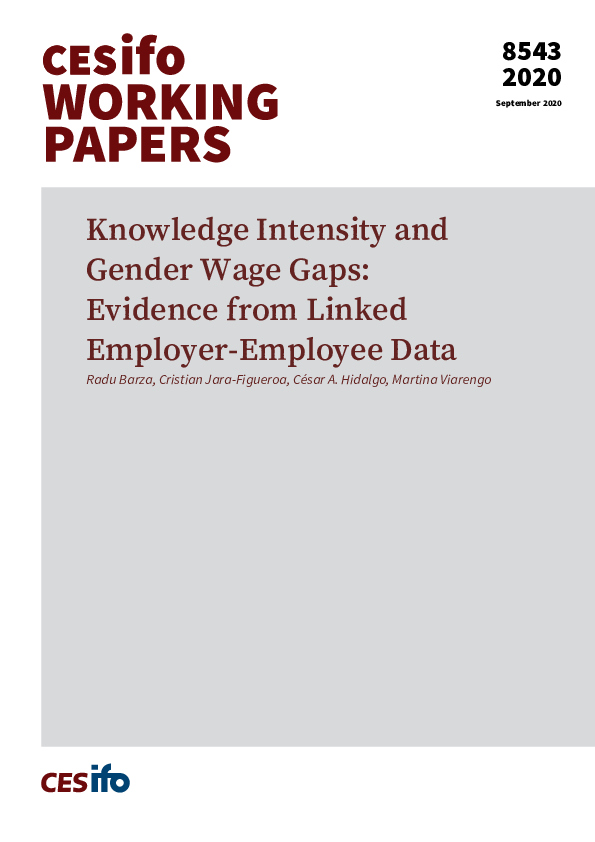Knowledge Intensity and Gender Wage Gaps: Evidence from Linked Employer-Employee Data
CESifo, Munich, 2020
CESifo Working Paper No. 8543

Do knowledge intense jobs exhibit lower gender gaps in wages? Here we use a linked employeremployee dataset of the entire Brazilian formal labor force to study the relationship between gender wage gaps and the knowledge intensity of industries and occupations. We find that employees in high-skilled occupations and industries experience lower gender wage gaps, and that the effect of knowledge intensity is stronger when the demand for skilled labor is high and the supply of skilled labor is low. We also find evidence that the gender wage gap of skilled workers, but not that of unskilled workers, decreases when knowledge intense industries grow. These effects are robust to controlling for individual, occupation, sector, and location characteristics. To address endogeneity concerns, we use a Bartik instrument based on labor demand shocks. Together, these findings suggest that competition for skilled labor in knowledge intense industries contributes to the reduction of gender wage gaps.
Labour Markets
Economics of Education